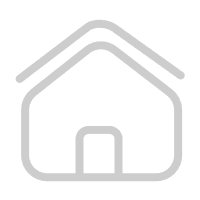What is the minimum thickness for CNC aluminium?
The minimum thickness for CNC aluminium profiles is a critical consideration for manufacturers and engineers working with this versatile material. CNC (Computer Numerical Control) machining is a widely used manufacturing process that involves the use of computer-controlled machines to remove material from a workpiece, resulting in highly precise and complex components. Aluminium profiles, in particular, are popular in various industries due to their lightweight, durable, and corrosion-resistant properties. However, determining the minimum thickness for CNC aluminium profiles is essential to ensure the structural integrity and functionality of the final product.
When it comes to CNC machining of aluminium profiles, the minimum thickness is influenced by several factors, including the type of aluminium alloy, the specific machining process, and the intended application of the final product. Aluminium alloys vary in their mechanical properties, and the choice of alloy can significantly impact the minimum thickness that can be effectively machined. Additionally, the CNC machining process itself, including the cutting tools, feeds, and speeds, plays a crucial role in determining the minimum thickness that can be achieved without compromising the part's integrity.

In general, the minimum thickness for CNC aluminium profiles can range from 0.5mm to 3mm, depending on the aforementioned factors. For instance, when using high-strength aluminium alloys such as 7075 or 2024, the minimum thickness may be closer to 1mm due to the material's inherent strength and hardness. On the other hand, softer aluminium alloys like 6061 or 6063 may allow for thinner profiles, potentially reaching the lower end of the 0.5mm range.
It's important to note that achieving a minimum thickness for CNC aluminium profiles requires careful consideration of the machining parameters and the specific requirements of the final part. The selection of cutting tools, the optimization of cutting speeds and feeds, and the use of proper lubrication and cooling techniques are all essential in achieving precise and consistent results, especially when working with thin aluminium profiles.
Furthermore, the intended application of the CNC-machined aluminium profiles must be taken into account when determining the minimum thickness. For structural components or parts subjected to mechanical loads, a thicker profile may be necessary to ensure sufficient strength and rigidity. Conversely, for applications where weight reduction is a priority, thinner profiles may be feasible, provided that the design and material selection are carefully evaluated to meet the required performance criteria.
In addition to the mechanical considerations, the surface finish and dimensional tolerances of CNC-machined aluminium profiles should also be factored into the determination of minimum thickness. Thin profiles may be more susceptible to dimensional inaccuracies and surface imperfections, requiring meticulous attention to machining techniques and quality control measures to ensure the desired outcome.
In conclusion, the minimum thickness for CNC aluminium profiles is a multifaceted aspect of the manufacturing process that demands a comprehensive understanding of material properties, machining capabilities, and application requirements. By carefully evaluating the specific alloy, machining parameters, and intended use of the final product, manufacturers and engineers can effectively determine the minimum thickness that can be achieved while maintaining the desired performance and quality standards. With the right combination of expertise, technology, and attention to detail, CNC machining of aluminium profiles can deliver precise, reliable, and functional components across a wide range of industries.

Zhongchang Aluminum specializes in providing comprehensive aluminum extrusion processing services, focusing on the production of aluminum profiles. We offer a wide range of value-added services, including precision cutting, drilling, milling, and other forms of secondary processing. Our goal is to provide customers with a one-stop solution for all their aluminum extrusion needs. If you are in need of aluminum profiles, please contact us freely.

 CNC Machining Aluminum Profile
CNC Machining Aluminum Profile Aluminum Tube & Pipe
Aluminum Tube & Pipe Industrial Aluminum Profile
Industrial Aluminum Profile Architectural Aluminum Profile
Architectural Aluminum Profile Evaluate
Evaluate









